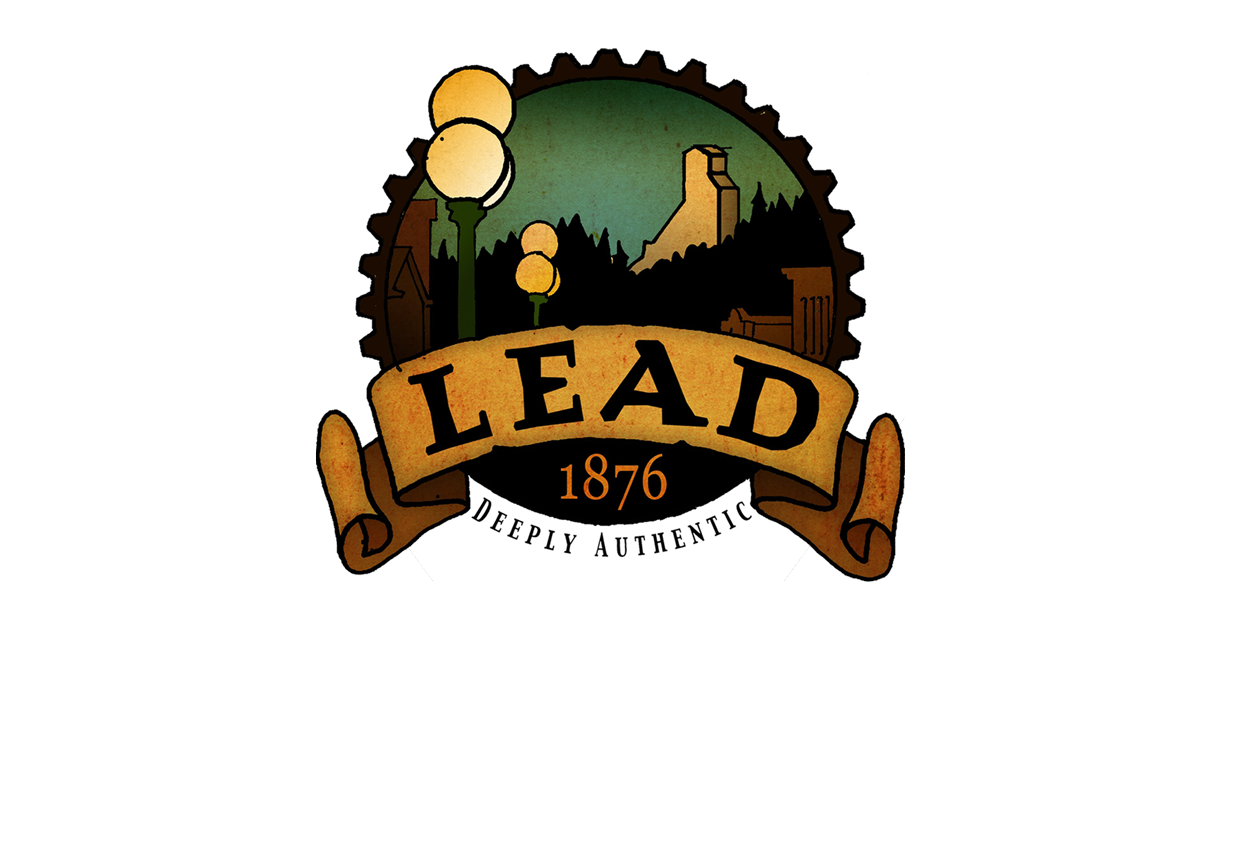Alexander Cruickshank Home
101 South Galena St | Built in 1902
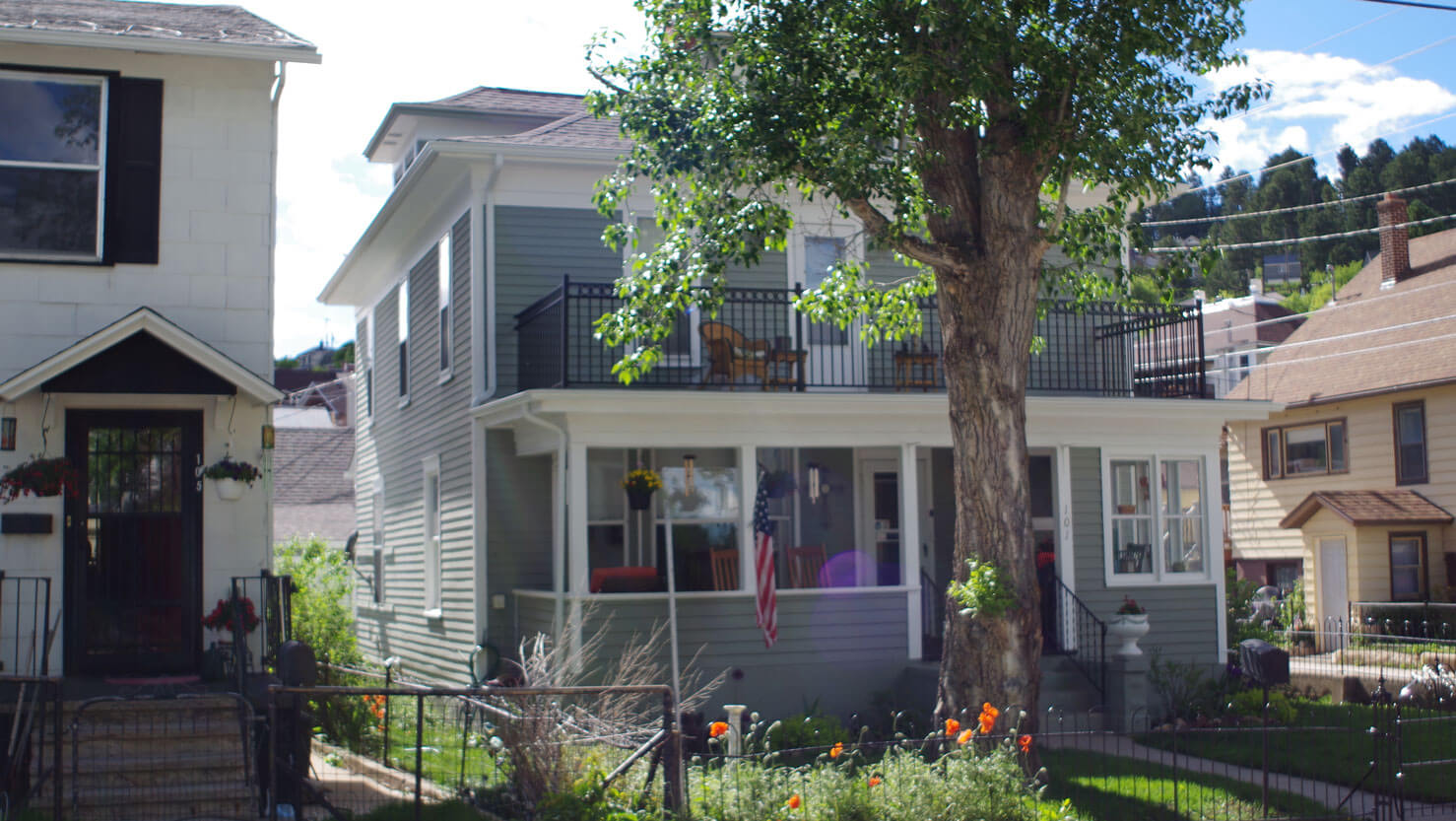
Exterior of Alexander Cruickshank Home
Initially, it was believed that another structure sat on this property, but evidence suggests that the current house was built on this site in 1902. It is likely that the home was called “William Butler Home” because a building permit was issued in 1909 for renovation being done on the home by Mr. Butler. As William Butler did not come into possession of the home until that time, it appears that the first owners of this home would be Alex and Emma Cruickshank. The first mention of Cruickshank ownership was November 1901 when the Lead Daily Pioneer wrote that “Ernest May and wife to Emma A. Cruikshank, the southerly 40 feet of lot 16, Block 30, city of Lead, $2500.” The earliest reference of the family actually living at this address was in August 1902 when the newspapers communicated a wedding in the Cruickshank’s new home for Mr. John Merril and Miss Hannah Reid, who was Mrs. Cruikshank’s sister. A month later, the social pages wrote of a birthday party in Mrs. Cruikshank’s honor with dancing, music and general conversation taking place in the home.
The Cruikshanks lived here until late 1904 or early 1905, and left sometime after Mr. Cruikshank returned from the east to receive
medical treatment. While illness convinced Mr. Cruikshank to leave Lead, it would be helpful to understand his impact in Lead City.
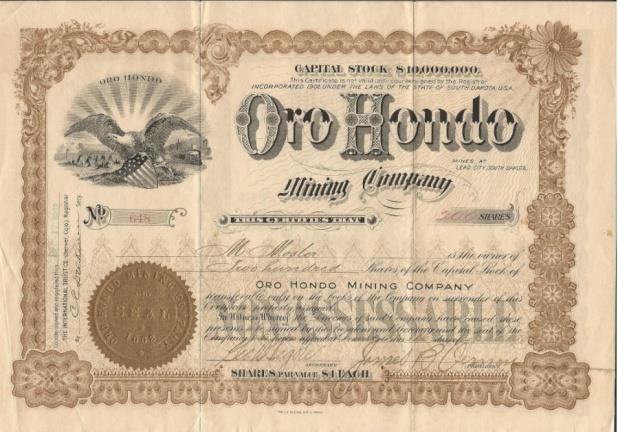
Oro Hondo Mining Certificate
Mr. Cruikshank was a successful miner who came with his brother, Gregor, in 1879 to the Black Hills. Mr. Cruikshank, an immigrant from Scotland, was a principle at the Oro Hondo Company mine, and also held interests in other lodes in the Black Hills. In those early days, these mining claims were incessantly contested, and one of the largest contests was between Mr. Cruikshank and Ernest May in 1898. Both men claimed the Caledonian Mine belonged to
each other, and this eventually went to court. This case appeared in court at least three times with the majority of jurors believing Mr. Cruikshank should be awarded the mine, and because of the mine’s value, Mr. May would continue contesting the verdict by breaking down Mr. Cruikshank’s reputation. Eventually Mr. May’s attorneys would negotiate a settlement, which must have been satisfactory to both parties.
Alex Cruikshank was no stranger to conflict. In the 1880s, he got into a fight with Ed Trafton after their dogs got into a fight. During this tense engagement, Mr. Trafton pulled out a knife threatening to kill Mr. Cruikshank. Trafton cut him on his forehead over his right eye, and while no other cut penetrated his skin, it did shred his clothing. Mr. Cruikshank would be in-and-out of court arguing with others regarding their claims, and in one case his initial suit, which he lost initially, was reversed by the South Dakota Supreme court. This suit was over a mining patent for the Big Foot Mining Claim. In the Spring of 1903 an interesting news article appeared in the local newspapers about the Cruickshank home. The home on Galena Street received major damage from the creek that flowed along Sewer Alley. Cruickshank had repaired it a few months earlier after water flooded his basement, and this flood erased every improvement done several months earlier. The newspapers told its readers that the waters reached 8 feet, which was the depth of the basement. One of the newspapers wrote that several Findlanders, who were living in the basement, were outside watching as the water took “their moveable property floating near the ceiling of the inundated basement.” In 1904 Mr. Cruikshank came down with grippe, and ended up in the hospital for an operation of unknown origin. He left Lead for the east to recuperate, and in his travels found himself with John Curnow in Cape Nome, Alaska in July. By the end of the year, he was back in Lead and working at Oro Hondo, and unfortunately had part of his thumb taken off while working at the mine in December. As a man who bragged about escaping injuries over the years, and coupled with the fact he had a ranch near Sturgis with 250 cattle and overcoming a recent illness, may have been deciding factors to leave Lead City for life on the ranch.

victor jepsen
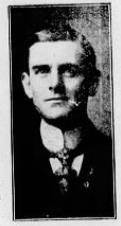
Victor Jepsen


In 1905 Victor Jepsen was seen living at this house, as Mrs. Jepsen was advertising for boarders. On November 22, 1907, the home at 101 S Galena was being prepared for sale, as this news item indicated. Transferring ownership to his wife initially to prepare for a future quit sale transacted in 1909.
The next owner of this house was Victor T. Jepsen who sold insurance and real estate in the Lead-Deadwood area. Initially, he had a partner, but in 1905 decided to go on his own. Simultaneously, Mr. Jepsen was building a thriving real estate business in Rapid City, and by 1906, he was spending more time in this Black Hills city than he was in Lead City.
By mid-year 1907, he decided to move his family to Rapid City, and as the news reporter wrote about Jepsen’s last days in the house, “came back to Lead, busy packing up household goods preparing to leave Lead.”
Mr. Jepsen told the reporter that his Rapid City business was taking
almost all his time, and that he felt it was best for the family to move to Rapid City. In the meantime, he had also found new renters until he could sell the home.
After leaving Lead City, tragedy would strike the Jepsens in 1910. Mrs. Jepsen, the former Katie (Kittie) Gallop from Deadwood, died at home from Pneumonia. Her father-in-law, O. R. Jepsen, took the train to Rapid City to provide support, but seeing that her health had improved, went back to Lead. In a few days, O. R. Jepsen and his wife received word that their daughter-in-law had passed away. Upon her death, she left behind two young children, Marvin 9 and Glen 7. They would be raised by an aunt, and would spend their childhood between a townhouse in Rapid City and a ranch outside the city limits.
Glenn Jepsen was two years old when he lived in the house on Galena Street, and most likely remembered little of his time here. As he was one of the more notable people to have been born in Lead, and it is noteworthy to mention his contribution to science.
Glenn Jepsen had a brilliant career in the area of geology and paleontology, and eventually attained the position of Sinclair Professor of Vertebrate Paleontology at Princeton University. It was no surprise that he would enter this field, as he spent many summers in his youth exploring fossils in the Badlands area, and later would explore regions in Wyoming and the Big Horn mountains for prehistoric land mammal fossils. It is with his discoveries in western Wyoming where he was initially recognized in his field.
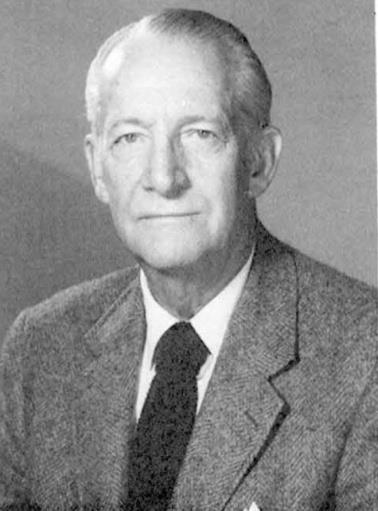
Glenn Lowell Jepsen
1903-1974
In his lifetime, he achieved many honors including the Addison Verrill Medal, one of Yale University’s top honors in Science. In addition, he was a fellow in the Geological Society of America, Paleontological Society of America where he was Vice President, and Society of Vertebrate Paleontology where he was President in 1944 and 1945.
These are a few of the organizations where he was a member or held leadership positions. Mr. Jepsen taught at Princeton University for 41 years, and over that time influenced many graduates of this school, and upon his death, a memorial from the alumni was created on his behalf.

William butler

On April 12, 1909, V. T. Jepsen signed a warranty deed which relinquished his interests in Lot 16, Block 30. This legal address translates to 101 South Galena, and it allowed the Miners and Merchants Savings Bank to sell the home to William Butler.
In 1909, the newspapers wrote about the improvements taking place at this address, including new sidewalks and exterior modifications. Interestingly, the newspapers told its readers that the house “fell into the basement while being moved.” This fall apparently “broke dishes and glassware inside the house,” and as this was written in July, it is clear that the current home was the original home built on South Galena. At the time, Homestake Mining company required many homes moved to install underground culverts to direct spring waters along what is now Julius Street. 101 Galena Street and the Kate Fogelsong home across the street at 104 Galena Street were moved ten feet south to their present location, and this move allowed Mr. Butler to install a new boiler before the home was moved to its current position. This boiler heated this home until 2013, almost 104 years after its installation.
William Butler and his wife had one daughter, affectionately known as Tootsie, and the earliest reference of her in this house was regarding a sledding accident going down Galena Street. Later, Tootsie, or Delora which was her real name, had contracted meningitis in 1911. While Tootsie survived this disease, it must have difficult on the family, as the Butler’s divorced within a few years.
In 1916, William remarried, and he along with his new wife, Maude, lived in this home for only a year. William created a comfortable life while living in Lead…starting with an ice delivery business, evolving to a delivery and dray service, and eventually moving into road construction. The road through Spearfish Canyon was one that his company built circa 1915.
While living in the house, the Butlers had several maids and cooks…and some of them were physically living in the house. At one point, they had two cooks. Additionally, Butler had used the upstairs front room for some of his teamsters to stay while working in Lead. The maids and cooks also serviced the boarders who lived in this residence, as we know that at least two rooms were used for boarding.

george morthland
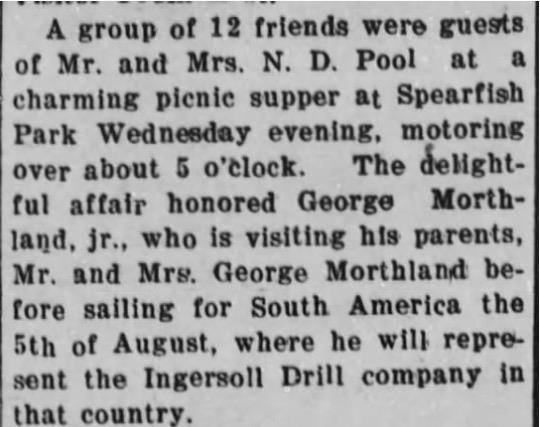
In April of 1917, Butler sold all of his business interests to The Black Hills Transfer & Fuel Company based out of Deadwood. Following this sale, William Butler moved his family to Deadwood in May, and by October, George Morthland was advertising in the Lead Daily Call “FOR RENT – A large front room, steam heat. Inquire Geo. Morthland, 101 So Galena St.”
George Morthland was a “big-wig” by today’s standards, and supervised the construction division for Homestake Mining Company. Over the years , a number of residents along Galena Street were employees of his division at one time or other. One notable achievement for Mr. Morthland was a new crushing machine patent that took the best of the current stamp mills technology, and made them more efficient and quieter. In the latter part of his career, he became the Director for the Homestake and the Lead Water Company.
Elizabeth and George Morthland had two daughters and two sons: Gladys (1897), George (1902), Elizabeth (1908) and Samuel (1909).
George Jr. and Samuel went off to Bakersfield, California where George found employment with an energy company. George and his wife later removed to Illinois with his company, and he would come back to Lead and tell the locals of his trips to far-away places like Chile.
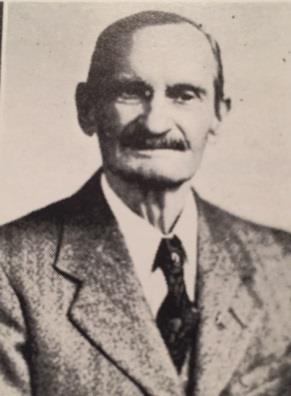
George Morthland, Sr.
Homestake Veterans Association
Samuel received his degree from University of Southern California, and returned to Lead finding work like selling automobiles before the war. He enlisted in the army in 1942, and married a Redfield native in Montgomery Alabama in 1943 while stationed in the south. He reached the rank of Captain, and after the war returned to Lead. After the war, he was employed with the Equitable Insurance company for 25 years, and took on leadership roles in the American Legion.
One of Mr. and Mrs. George Morthland’s daughters lived in Los Angeles, but tragically, Charles Brookmiller, their son-in-law, died from an extended illness caused by ptomaine poisoning. Besides his wife, he left behind a daughter, Ruth, who would visit her grandparents over the years at their Sunny Hill home.
George Morthland’s daughter, Margaret, married Joe Bowlby in 1930, but was granted a divorce in 1935 for desertion in Nevada. Peggy returned home, and for many years cared for her parents at their Sunny Hill home. She would enter marriage again to Joe Porter, and continue living in Lead.
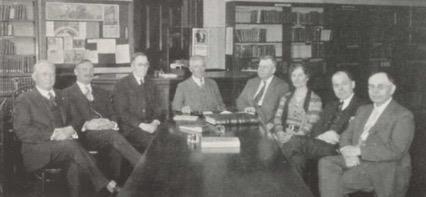
School board members 1917
Geroge Morthland is second from left
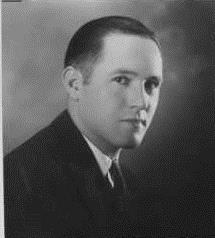
George Nathan Morthland, son of Mr. and Mrs. Morthland
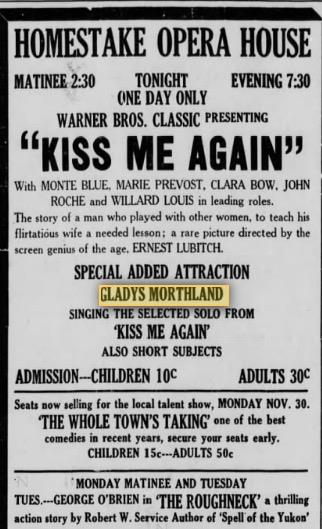
Another daughter, Gladys Morthland, finished three years at the Spearfish Normal School, and later worked for her father at Homestake. She was the timekeeper in the carpentry division, but it was the 1920 census that showed her true passion. When the census taker asked “what is your occupation”, she told them “singer” and was working with an entertainment troupe in the area. In addition to working at the construction office of Homestake, she must have sung in hundreds of venues in those early years. By 1930, she was now telling the census taker that her occupation was “bookkeeper”, and in a few years would find herself married and moving to Los Angeles.
The last reference of the Morthlands living at this address was in 1922. Gladys Morthland advertised that she lost her glasses somewhere between Homestake and her home, and requested they be returned to her at 101 S Galena.

william john jelbert
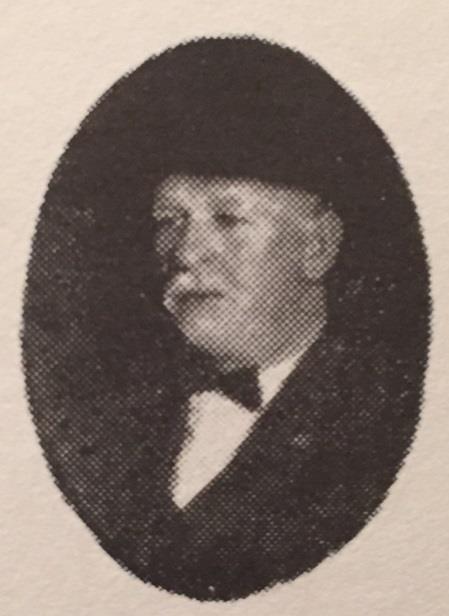
William Jelbert
Homestake Veterans Association
By mid-year, William John Jelbert moved his family into the home, but mysteriously they would live here for less than 2 years. In November 1924 William John Jelbert sold this property to Victor Sarich. The Lead Daily Call heralded this purchase, “Lead is returning…and many taking advantage of reasonable prices” to buy homes in the best parts of town. Even back then, people believed that Lead was the best town in the west, and it was a common theme articulated in the newspapers.
While it is unclear why the Jelberts spent so little time in this house, it may have been due to the devastating death of their son to pneumonia in 1923. Richard Jelbert, who worked in the blacksmith shop at Homestake, had been sick for several weeks, and he was taken to the Homestake Hospital because his condition was worsening. He died at 30 years of age, and was Mr. and Mrs. Jelbert’s eldest son. The heartbroken family would continue placing a memoriam in the newspaper on the date of his death for the next few years.
The family left Galena Street for a new home in Central City, and this happened before September 1824 because Mrs. Jelbert had contracted a case of typhoid fever while living in her “Central” home. Unhappily, Mr. Jelbert would die as a result of cancer in 1927. Jelbert, like some of his neighbors, was an immigrant from Cornwell, and came to Lead in 1890 to work for Homestake.

victor sarich
Victor was a well known butcher and grocer, and had his shop across the street at the back of the Highland hotel. He died in 1936 and had been in poor health for several years. His wife, who loved to garden and maintain her flower beds, was having difficulties trying to hold onto this house after his death. To make ends meet, she took in boarders and small businesses. The garage was also rented, and brought in an additional $5 a month to the household. One of the long-term businesses was W. M. LeSueur, rented the upstairs front room for his massage business between 1930 through 1939.
Then in February 1938, the city found that there was error in their tax assessment for the tax years 1931 through 1937. They wrote Mrs. Sarich that she owed $1,933.65 to the city, and it needed it paid within 60 days. This may have been the proverbial “nail in the coffin” that eventually led to the loss of the homestead, business and garages on the west side of their property.
In 1940 the Merchants and Mining Bank foreclosed on the business, including her home of 15 years. She contested the foreclosure proceedings, as she did not realize that the house was used as collateral. Eventually Mrs. Sarich sold off most of her furniture to pay remaining bills, but this would not be enough to keep her home.
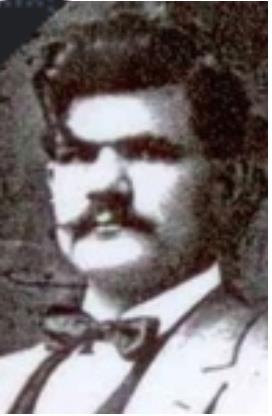
Victor Sarich
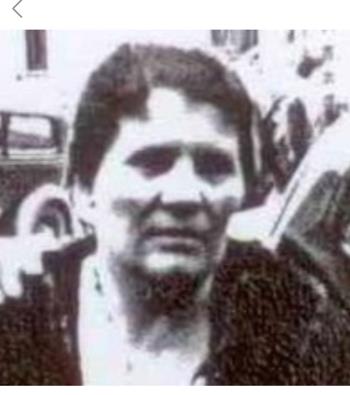
Eva Sarich


gertrude lang
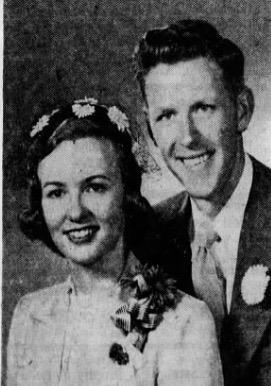
Robert Lang (son of Gertrude Lang) and Dorothy Descher
The house was sold to Gertrude Lang in 1941, and her family would own this house until 2013. Mrs. Lang, along with her husband, purchased “The Lobby”, which may be best described as a convenience store, in 1932. Clifford Lang died in 1936 and Gertrude ran the store for over 30 years . They would become one of the longest living residents on Galena Street.
The Langs would occasionally rent rooms to boarders in the early years. One of the first renters was in 1942, as the new boarders wanted to let people know where they lived, “Mr. and Mrs. Bud Irish have moved into the Sarich home on Galena St. across the home of Mrs. N. D. Pool.” It is interesting that the paper was still calling this home by its previous owner’s name.
In 1951, the newspaper noted that there were four pairs of twins living on Galena Street which they believed to be a ‘world record.’ Ms. Gertrude Lang’s sons were among this group of twins who lived on this street.
Robert and Dorothy Lang, son of Gertrude Lang were married at Calvary Episcopal Church in Sioux Falls. They initially made their home at 507 Julius Street, which is the 400 square foot guest house that is currently behind the Lang Home at 101 Galena Street. Robert is one of the twin brothers of Phyllis Lang.
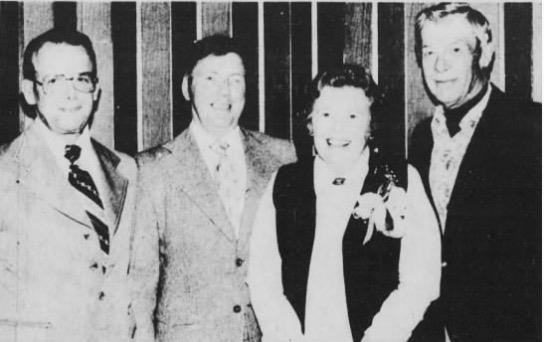
Phyllis Lang at her retirement party from SD Job Service.
Mrs. Lang’s daughter, Phyllis, was an independent woman, and several people remembered her strong personality. She was active in civic affairs, keenly interested in the city’s direction, and worked at Job Service for 30 years.

CONTACT
Lead Historic Preservation
Lead City Hall
801 W Main St
Lead, SD 57754
(605) 581-1401
